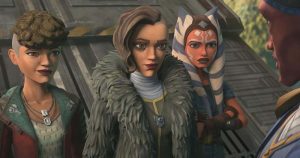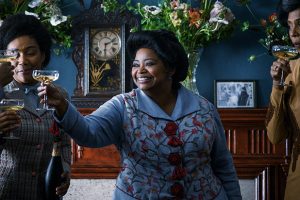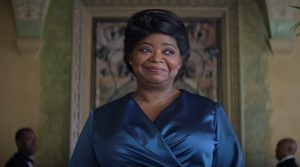For some, I’m sure it’s a bit of a disappointment that the final season of The Clone Wars has so far devoted less time to the Clone Wars than the interpersonal dynamics of our main characters, with small-scale, introspective interludes providing insight into our heroes’ motives and agendas. So far, there’s only been a handful of battles, and for the most part they too have been smaller than in previous seasons.
But while I too felt the same way, my feelings on the current season have changed since watching today’s episode: as far as The Clone Wars stories go, this is one of the best I’ve seen – not because of showy action-scenes (there are none!) or shocking revelations concerning Star Wars lore, but because of the fascinating relationships between the core trio in this new story arc, and the surprising depth and complexity of their motivations.

Once again, I have to hand it to Ahsoka Tano (voiced by Ashley Eckstein): the Jedi padawan turned exiled Coruscant rogue has always been one of The Clone Wars‘ greatest weapons in its fight to maintain relevance and pop culture significance – her lovable character, burdened as she is with regret, sadness and longing, touched our heartstrings when she made the bold decision to leave the Jedi Order, after being framed for a horrible crime and forced to turn against her friends. Now, stuck in the criminal underworld far below the surface of Coruscant, Ahsoka relies on her wits and social skills to carry her expertly through even the most dangerous situations.
Joining her for the ride (or rather, inviting her on the ride in the first place) are sisters Rafa (Elizabeth Rodriguez) and Trace Martez (Brigitte Kali), a tough, wise-cracking duo. I found both characters to be mildly interesting in last week’s episode, which introduced viewers and Ahsoka to them for the first time, but now, with much better writing, both women come off as clearly defined, charismatic characters. Rafa, the older of the two, endangers them all when she enters into a risky bargain with the Pyke Crime Syndicate, which involves a journey through hyperspace to the planet Kessel (an important location in Han Solo’s origin story as a smuggler), but her heart is in the right place and she made the deal to try and buy herself and her sister an escape ticket from Coruscant. Trace and Ahsoka, who have developed a very close bond during their time together, quickly become entangled in the bargain as Rafa’s plan begins to unravel, with Trace having to pilot her work-in-progress starship The Silver Angel to carry out Rafa’s illegal scheme – and Ahsoka having to use all her Jedi training to figure out a way to keep the trio safe.
This task is made more difficult because Ahsoka is currently trying to keep her past a secret, especially since discovering that, in Coruscant’s lower levels, Jedi are looked upon as a corrupt police force prone to violence: when pressed about how she knows so much about everything from starship engineering to the political situation on Kessel, Ahsoka has to come up with more and more elaborate explanations – one of her best excuses is when she claims she graduated from “Skywalker Academy” in the upper levels of Coruscant. Another fabulously constructed moment involves Ahsoka nearly running into her former Jedi master by chance when Trace Martez accidentally steers her amateur ship directly into a military flight lane, prompting Anakin Skywalker (Matt Lanter) and Admiral Yularen (Tom Kane) to question the ship’s crew over the radio. But it’s Anakin who tells the Admiral to back down when he reaches out into the Force and senses Ahsoka on the ship. The moment is absolutely heartbreaking: but Ahsoka’s subsequent silence only reinforces the divide between the two characters, who were once as close as siblings. Later in the episode, Ahsoka has no qualms about making a pointed jab at the Republic she used to serve for not shutting down the slave-worked spice mines of Kessel.

Nonetheless, despite how cleverly Ahsoka is able to disguise herself, it’s very clear that Rafa has her doubts about the Martez sisters’ new working partner. She drives a wedge between Trace and Ahsoka’s close friendship, which in turn causes them to argue, which then leads to…well, SPOILERS.
Basically, the end result of the episode is that Trace Martez dumps three-thousand credits worth of quality Kessel spice into the void of hyperspace, an action she quickly regrets after she realizes she was misinterpreting Ahsoka’s “ethical argument”. Ahsoka, for her part, might have been wise to clarify that when she said she didn’t want to hand over spice to the Pykes, that didn’t actually mean she wanted to get rid of the spice entirely. But when the trio do come face to face with the Pyke Crime Syndicate at the end of the episode, it’s Ahsoka who briefly saves them all when she utilizes a hasty Jedi mind trick against the Pyke leader – which would have worked, had there not been other Pykes present: we leave our heroines stuck in a Pyke tractor beam, their escape plan foiled, their futures uncertain. Will Ahsoka be revealed as a Jedi in next week’s episode, as the three women presumably find themselves locked up in a Pyke prison? Will Rafa and Trace ride Ahsoka’s coattails to freedom, or devise their own plan? We must wait and see.
What did you think of this episode of The Clone Wars? Personally, I’d say it’s been my favorite of the final season so far, but I’m hoping the series can find a way to outdo itself next week. Share your own thoughts, theories and opinions in the comments below!
Episode Rating: 9/10






